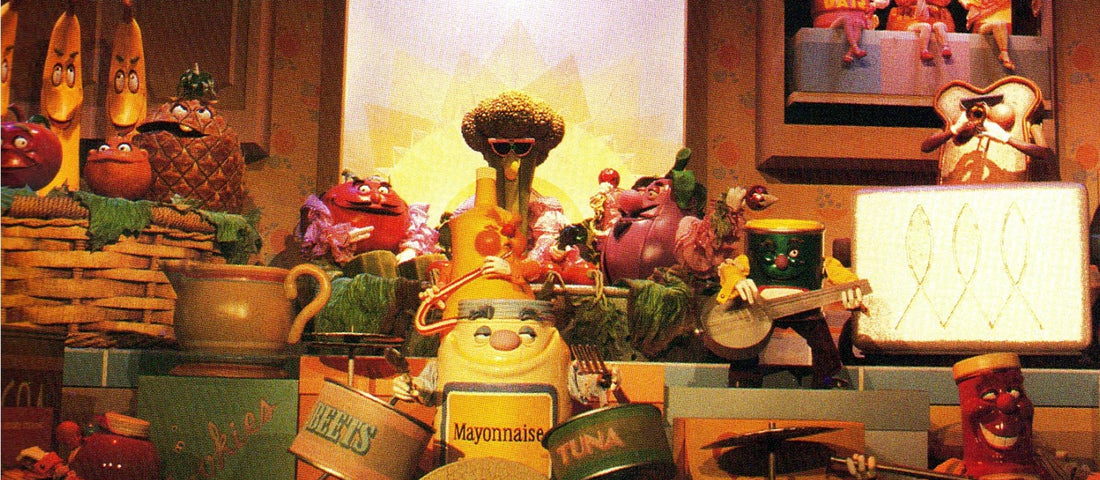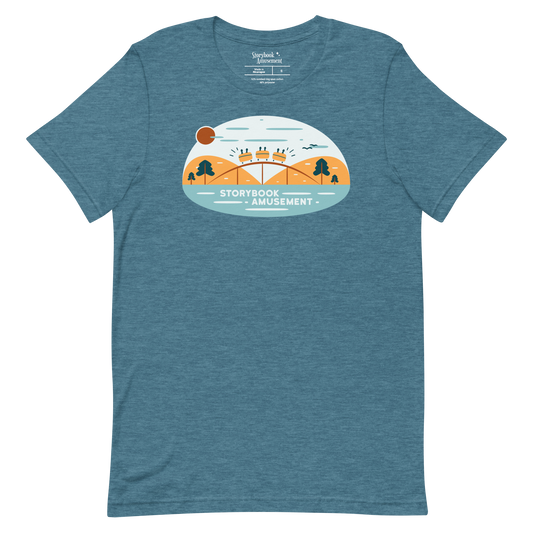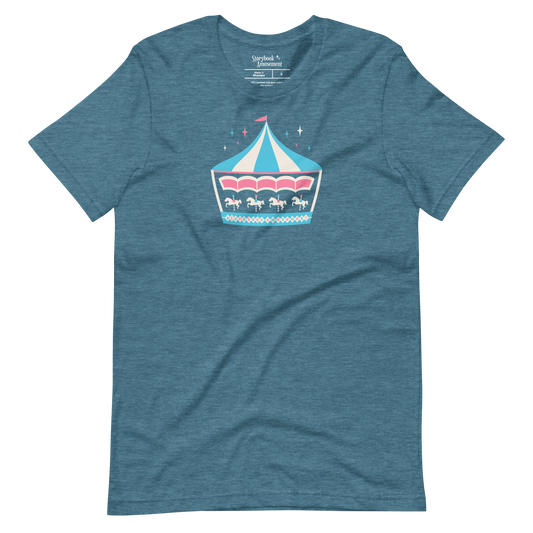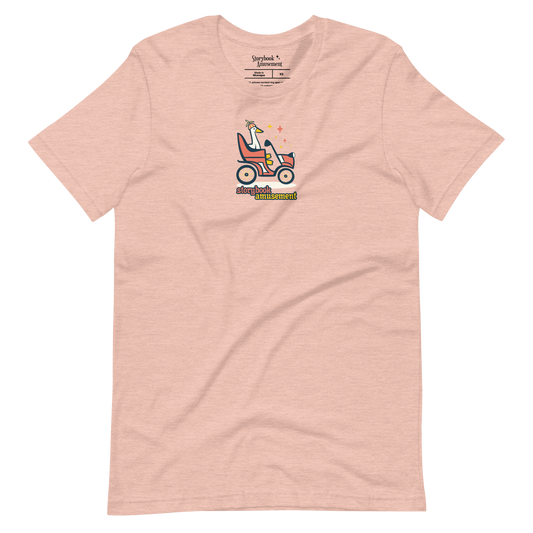The Delight of EPCOT
Edutainment: The word breaks down to “educational entertainment.” Now, if you took that word—edutainment—and turned it into a theme park, you would get EPCOT.
EPCOT—as you may know—was Walt Disney’s ambitious idea to develop an experimental community.
“EPCOT will take its cue from the new ideas and new technologies that are now emerging from the creative centers of American industry. It will be a community of tomorrow that will never be completed but will always be introducing and testing, and demonstrating new materials and new systems. And EPCOT will always be a showcase to the world of the ingenuity and imagination of American free enterprise.”
– Walt Disney, 1966
The plan was to build an optimized city near Orlando, Florida. However, following Walt Disney’s passing in 1966, EPCOT as originally intended was abandoned. Still, construction for Orlando’s Walt Disney World moved forward, with Magic Kingdom ultimately opening in 1971.
Through the following decade, Disney looked to expand the Florida-based resort with a new theme park. Disney took a different approach with its upcoming theme park. The proposed park would stray from the castle and fantasy influences seen around Disney’s two existing parks at the time, Disneyland Park and Magic Kingdom.
Disney instead took inspiration from Walt Disney’s idea of EPCOT when planning the company’s next theme park: EPCOT Center.
EPCOT Center had a lineup of expressive attractions created to entertain, inspire, and educate. EPCOT Center was a theme park unlike any other in its time, with the passionate and elaborate work of WED Enterprises on full display.
Among animated dark rides and insightful exhibits, another one of EPCOT Center’s opening-day attractions was one of the more offbeat ones ever created by Disney; it was a show made possible by the ingenuity of past Imagineers, eventually made almost unrecognizable, and left to rot in the middle of a massively popular Disney theme park.
This is the story of Kitchen Kabaret and Food Rocks at EPCOT.
Watch on YouTube
This article is available in video form with added visuals and music. Click HERE to watch it.
Creating The Land at EPCOT Center
Through the ‘70s, the plans for EPCOT Center were coming together. The park’s rich variety of attractions and exhibits would be divided between two main areas: World Showcase and Future World.
World Showcase would feature a number of pavilions, presenting countries from around the globe. The pavilions of Future World would focus on the innovations of different subjects, such as energy, transportation, and imagination, among others.
One of Future World’s largest pavilions was the Agriculture Pavilion, set to demonstrate the value of farming and ecosystems. The Agriculture Pavilion would represent different biome environments within elaborate glass structures that resembled beautiful crystals.
Renowned Imagineer Rolly Crump was in charge of creating the pavilion, giving it the imaginative touch Disney was known for. The pavilion originally had a host known as The Landkeeper, who was an original character. Imagineers were also planning a suspended hot-air balloon ride, named Blueprints of Nature, that glided above diverse biome environments.
The Land Gets Sponsored
Developing EPCOT Center was a challenging process. The results, however, would be worth it as Disney anticipated 10 million guests to visit the new park each year. The cost of EPCOT wasn’t cheap, considering its lofty plans and high expectations. Thus, Disney looked for corporate sponsors to co-fund various pavilions. Nine corporations sponsored EPCOT Center’s individual pavilions upon opening, totaling in a collective $300 million across the park.
In 1978, Kraft agreed to sponsor the Agriculture Pavilion, committing to a $35 million deal for 10 years. With this new partnership, Disney had to adjust the plans for the unbuilt pavilion so it reflected the goals of Kraft as a sponsor.
At this point, the pavilion’s name was changed to The Land. The concept, which previously focused on ecosystems, shifted closer to farming and food, with a lean toward nutrition. Consequently, the Landkeeper character and the Blueprints of Nature ride were canceled.
Despite changes, The Land was going to be a robust pavilion, including an experimental greenhouse, and would provide an enriching experience for guests.
“You ask first-graders where their food comes from, and they say the supermarket. I think The Land will change that.”
– Dr. Henry A. Robitaille, director of developmental agricultural systems, Disney, 1982
Now aligning with Kraft as a sponsor, Disney found fitting ways to incorporate its signature whimsy into the pavilion.
The Art of Animatronics
Disney pioneered the art of Audio-Animatronic shows with the introduction of Walt Disney's Enchanted Tiki Room in 1963. From then on, Audio-Animatronic shows were a fundamental ingredient to Disney theme parks. As EPCOT Center was in the oven, Imagineers found a way to bake an Audio-Animatronic show into its lineup of attractions.
Disney started developing an Audio-Animatronic show for The Land that would amplify the message of the pavilion’s sponsor, Kraft. Audio-Animatronics were usually made to be animals or people, but this show would feature characters of a different flavor: a cast of animatronic food.
“Everyone was taking EPCOT very seriously [during development]...We thought, ‘Where’s the Disney in all this?’...Let’s have some fun and have the food come to life like cartoon characters would. Man, Kraft loved it, and eventually management loved it, and we were off and running.”
– Scott Hennesy, writer of Kitchen Kabaret, 2022
(Source)
Kraft Kabaret, later known as Kitchen Kabaret, would educate audiences about the four basic food groups as recommended by the USDA at the time. Kraft’s Nutrition Advisory Counsel consulted directly with Disney on the nutrition-focused material in the show, making it educational for the whole family.
Creating Kitchen Kabaret
Imagineer Scott Hennesy, the writer of Body Wars, wrote the script and lyrics for the show’s original music, which was scored by Buddy Baker.
The show’s characters were designed by Imagineer Steve Kirk, known for his early work creating the abdominal snowman on Matterhorn Bobsleds. Jeff Burke, whose credits include Country Bear Jamboree and America Sings, was the figure finisher for the Audio-Animatronics.
The team cooked up a full show, music, and characters through sketches, scale models, and eventually full-size figures. More than 30 Audio-Animatronics were developed for the show.
With EPCOT Center coming together, guests were soon in for a treat with a small Audio-Animatronic show in The Land Pavilion.
The Kitchen Kabaret Experience
EPCOT Center opened Oct. 1, 1982, as Walt Disney World’s second theme park. The grand opening pulled in massive crowds as park officials said attendance was greater than expected.
Available on EPCOT’s opening day was The Land Pavilion presented by Kraft. The expansive pavilion was the largest of the park’s opening-day attractions. It showcased noteworthy uses of land for agriculture by way of the spirit of progress, technology, and natural resources.
The Land Pavilion, with its standout conservatory-like architecture, offered a few experiences for guests. These were the Listen to the Land boat ride, two restaurants, a film presentation, and Kitchen Kabaret.
The entrance area for Kitchen Kabaret, on the bottom floor of the pavilion, was stylized like a theater lobby. It was decorated with food-themed posters and subtle food frills in the moulding. Past this room, the attraction had a holding area just outside the theater. The pseudo-outdoor room gave a calming nighttime feel in a town square. The bright lights of the theater entrance illuminated the restaurant facades and food-related storefronts in the well-themed area.
Once the doors opened, guests filed in the 225-seat theater, awaiting a 13-minute show. A smooth overture played, building excitement for the musical revue just moments away.
Kitchen Kabaret: The Show
Over the suspenseful roll of a timpani drum, an announcer said, “And now, the show that has the whole town cooking: The Kitchen Kabaret,” before introducing the show’s hostess.
A single spotlight shined on a lone animatronic off to the side—the hostess of Kitchen Kabaret, Bonnie Appetit. Draped over a stack of cookbooks, Bonnie Appetit started the show on a woeful yet relatable note with a case of the mealtime blues. She set up the show ahead, educating the audience of the basic ingredients that can make up a balanced meal.
The theater went dark as the curtains of the main stage opened. A spotlight revealed a classic 1940s-style kitchen, a look the designers called “cartoon deco.”
Jamming at center stage was an eccentric band of condiments called the Krackpots, resembling products by Kraft. They got the show going and brightened up the mood with their percussive groove. Bonnie Appetit, now with a snappy outfit, joined back in singing,
Thank you folks for coming to my kitchen,
as I sing the praise of good nutrition.
The Dixieland number concluded as the Krackpots lowered under the stage. Enchanting chords washed over the theater as Bonnie Appetit introduced the next act.
From here on, the acts of Kitchen Kabaret were based around the four basic food groups as outlined by the USDA back then: dairy, protein, fruit and vegetables, as well as bread and cereals.
Mr. Dairy Goods and his Stars of the Milky Way
First up were Mr. Dairy Goods and his Stars of the Milky Way—representing dairy. The refrigerator crept open with a cold mist pouring out. A group of talented dairy goods made their way into the spotlight with a crisp number.
The suave Mr. Dairy Goods—a carton of milk—sang in a classic, silky smooth voice while gripping a vintage microphone of the era. Behind him were Miss Cheese, Miss Yogurt, and Miss Ice Cream—who were all light spoofs of old Hollywood stars. They sang about the sweet delights of dairy before retreating back into the frosty fridge.
The ballad tapered off, and an upbeat horn section piped in. Bonnie Appetit introduced the next act: The Cereal Sisters.
The Cereal Sisters
The Cereal Sisters were a trio of singers parodying The Andrews Sisters and their hit song, Boogie Woogie Bugle Boy. Mairzy Oats, Rennie Rice, and Connie Corn were up in the cupboard harmonizing the poppy melody. They were accompanied by a trumpet-playing slice of bread, who eventually popped out of the toaster. The Cereal Sisters sang about him being the “toast of the town.”
The Boogie Woogie Bakery Boy slid into the toaster with a ripping trumpet solo, and the cabinet door closed on The Cereal Sisters at the end of their number.
In a bouncy mood after the song, Bonnie Appetit chimed in that she’ll, “Get together with the Toast of the Town for a jam session.” She was swiftly interrupted by a pair of wise-cracking characters.
Hamm and Eggz
Hamm and Eggz were a comedic duo who gave a little comedy relief to the show. Instead of singing a full song, they quipped through an act about protein with slides projected near the kitchen window to visualize their routine. Hamm was more of the straight man of the performance, and Eggz grinned through a dozen or so one-liners; every time he made a joke, his bow-tie proudly wiggled.
Once Hamm had enough of Eggz’s antics, they lowered into the steamy stovetop, just in time for the next song to start.
Veggie Veggie Fruit Fruit
This calypso number needed no introduction by Bonnie Appetit—the music calmly swelled in. A choir of fruits and vegetables joined in the samba, singing, “Veggie fruit fruit, veggie veggie fruit fruit.” Behind the bowls of fresh produce, a twinkling night sky was seen through the window, now with the blinds open.
Bonnie Appetit in a lovely tone sang over the relaxing rhythm.
I simply have to tell you
that my friends who are singing
are delectable.
Meals are divine
as long as you can dine
with fruit and vegetables.
The band of vegetables carried the beat as Bonnie Appetit handed off the song to the two groups, The Colander Combo and the Fiesta Fruit. The produce took it away with a verse about importance of fruits and vegetables. The broccoli lifted their glasses with an emphatic “Cha-cha-chá.”
Bonnie Appetit hopped back into the tune with a new wardrobe, now glamorously descending from the rafters on crescent moon. Fiberoptic fireworks sparkled and popped in the distance the as delightful song came to a close.
It was a clear display of composer Buddy Baker’s brilliance, with the perfect ambiance to match the calm, catchy spirit of the tune.
Finale
Bonnie Appetit segued into a new melody, thanking the audience for joining the show.
We'd like to thank you all
for listening to us.
We hope you understand
good nutrition's a must.
The animatronics from the whole show returned for a group finale. In the same order as their first appearance, the different food groups added to the song with their own flair.
Bonnie Appetit put the finishing touches on the message.
Now you've heard my friends,
they won't lead you astray.
When you balance up their act,
mealtime blues will go away.
The blinds on the window raised to reveal a vibrant sunrise. All the food, now with the Krackpots joining in, sang in unison for the grand finale. The show ended on a high note with dazzling lights and spectacular tones, emphasizing the importance of eating healthfully.
With that, Kitchen Kabaret came to an end.
Reception
Kitchen Kabaret was a tasteful show guests found charming. The show’s clever writing, nice touches, and subtle effects added up for an appetizing attraction. Kitchen Kabaret dished out a warm and inviting flavor with a nice balance of being amusing, entertaining, and educational.
It was a satisfying show with a witty self-awareness that wasn’t over-the-top. The contained seasoning was perfect for anyone interested in a signature Disney Audio-Animatronic show or those who just wanted a few minutes off their feet in the air-conditioning.
Kitchen Kabaret was popular enough for Disney to sell merchandise at The Land Pavilion in a gift shop called Broccoli & Co.
As the years went on and EPCOT Center changed a bit, The Land Pavilion would inevitably need a refresh. However, Kraft, the original sponsor of the pavilion, wouldn’t be around to make those changes—and neither would a fan-favorite.





